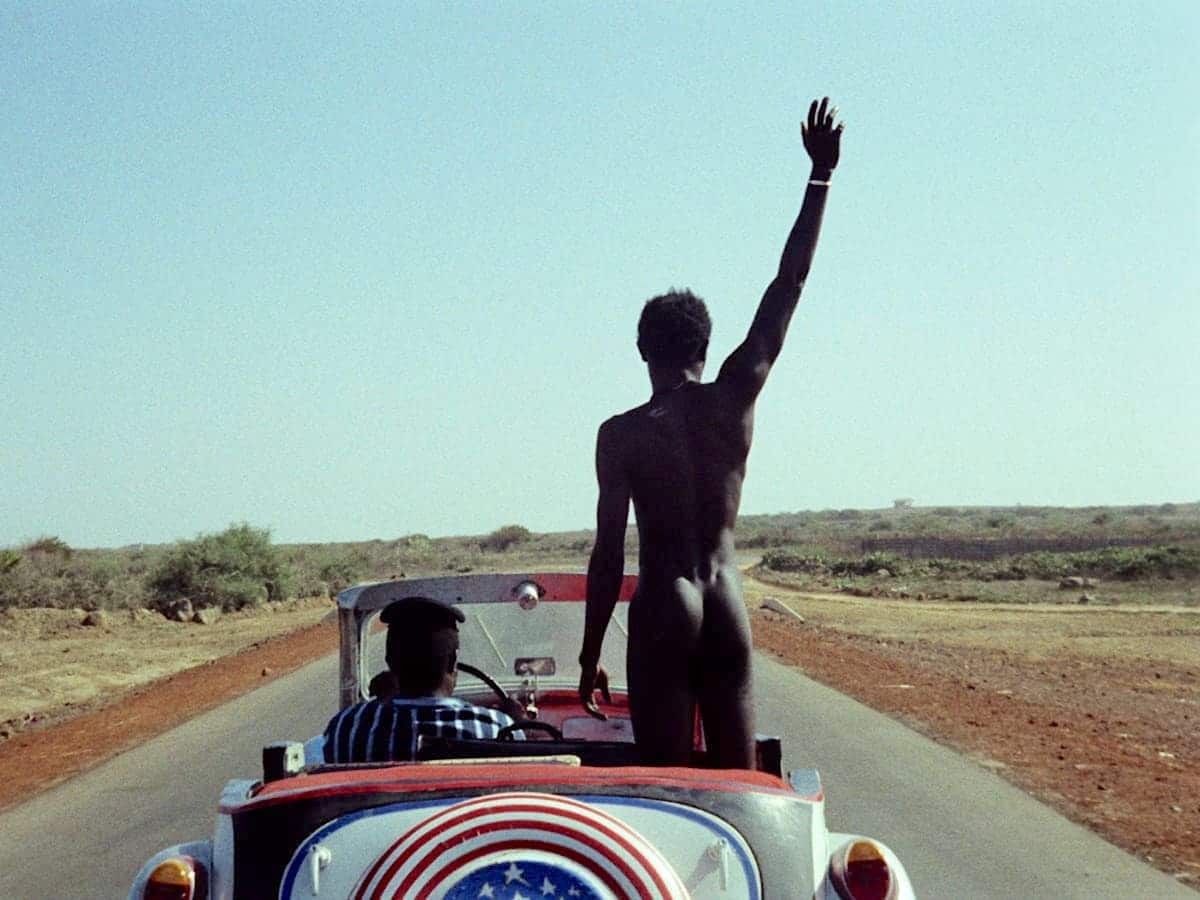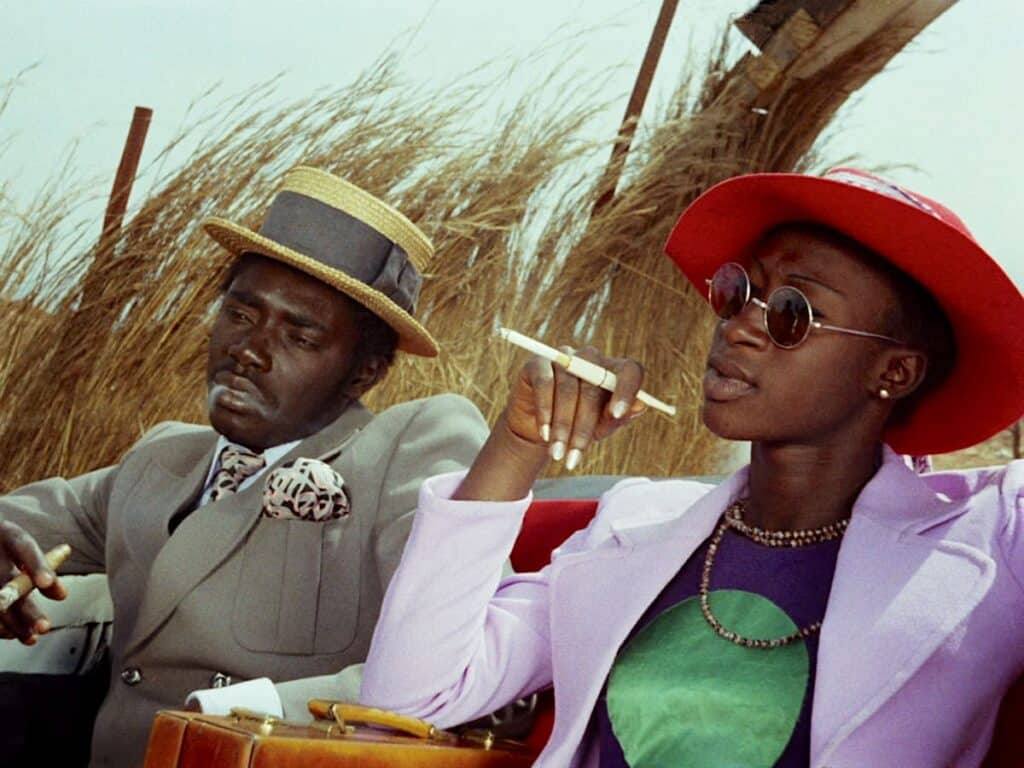Often described as Africa’s first avant-garde film, 1973’s Touki Bouki sits at number 66 on Sight & Sound magazine’s most recent Best of All Time list, had its restoration funded by Martin Scorsese’s World Cinema Foundation and was even referenced by Jay Z and Beyoncé in the promo material for their 2018 tour (which led to an interesting discussion about cultural appropriation, especially as their tour took in not one African country).
Is it any good though? Films end up on lists for all sorts of the wrong reasons – tokenism, lobbying and groupthink to name but three. The good news is that it’s as great as its reputation, a genuinely refreshing, technically brilliant, superb-looking and charismatically acted film telling the story of a couple of Senegalese hipsters who want to escape and go to Paris.
Before writer/director Djibril Diop Mambéty (uncle of current film-maker/actor Mati Diop) introduces us to his two main characters, he does some scene-setting and deftly establishes the skewed nature of the whole film. To a trilling flute on the soundtrack, a herd of zebu approaches the camera. It’ a scene of pastoral tranquility, the cattle shimmering in the heat and rolling as they go, a little boy atop one of them. Where can they be heading? Mambéty answers in the next shot, in a slaughterhouse, where the zebu have their throats cut right in front of our eyes. Blood gushes, the animals thrash and bellow and die. It’s gruesome. Then the flute returns, the same as before, but now ironic.
This juxtaposition of the blissfully placid, almost magical, and the viscerally realistic, documentary-like, pervades the whole film, which owes a lot to the French New Wave in its use of a fast and loose shooting style and jump cuts. Claims are made to a sort of street realism, but just like the New Wavers, Mambréty always has one eye on the hip.
The plot is almost Jean-Luc Godard’s Breathless, but instead of Seberg and Belmondo mooching about Paris we have Myriam Niang and Magaye Niang as Anta and Mory, a pair of smart, good-looking would-be sophisticates spacing about in Dakar and trying to scrape together, by fair means or foul, enough money to get away to France.
The Wolof title translates as Journey of the Hyena, Touki being Journey and Bouki being Hyena, a trickster character in African mythology (not dissimilar to the spider Anansi). Mory in particular seems to be imbued with the Boukian sense of fun (his motorbike with a zebu skull horns on the handlebars) and the Boukian eye for the main chance.
All these decades later, the avant-garde shooting style and the overlapping sound design no longer are no longer disconcerting – they’ve been absorbed into the mainstream. Instead the film now has a historical flavour, giving us a glimpse of life in a recently independent African country still carrying so many signs of its colonial history. The French cars, the shops, the occasional lapses into the French language.
The restoration reinforces the impression that Mambéty has a real eye for an image. Colours ping off the screen, whether it’s in the shanty town where women are carrying water, at the sports arena where men are wrestling while an impressively dressed crowd looks on, or just in the sights and sounds of the high street where Mory and Anta eventually buy their boat ticket to freedom.
In the little touches too – Mory lying on the beach where the yellow sand on his black skin makes him look like he’s been sprinkled with gold dust.
There’s a political aspect in the arrival late on of a couple of white French expats wanging on about Africans – no art, no culture, they’re like kids, they’re ingrates and so on – and the film is often discussed as if it were a political tract. It isn’t. Mambéty wants to tell the story of two people first and foremost, he wants to make a beautiful film second, and at a very distant third comes the political, tucked in here and there, as and when.
The film culminates in Mory and Anta’s arrival at the boat that’s going to take them from Africa’s west coast to Europe, dressed up in the fine clothes they’ve stolen en route. Here, Mory has last minute second thoughts. Life imitated art – Magaye decided to go back to herding zebu, while Myriam left Senegal for a life in the West (Alaska, eventually).
You can hear the two lead actors discussing that decision by telephone in Mati Diop’s 2013 semi-documentary A Thousand Suns. A great bookend to Touki Bouki, if you’re looking for one.
Touki Bouki – Watch it/buy it at Amazon
I am an Amazon affiliate
© Steve Morrissey 2023


